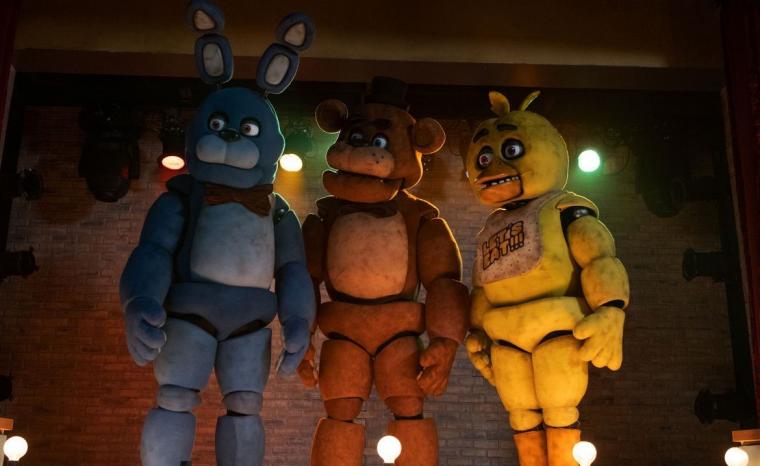
Five Nights at Freddy's
FIVE NIGHTS AT FREDDY'S
Some of you may be the parents of grade-schoolers who love the Five Nights at Freddy's video games and are now begging to be taken to the PG-13 fright flick based on the series. Given the film's rather staggering opening-weekend box-office haul of $78 million domestic – this despite its simultaneous debut on the Peacock streaming service – many of you obviously catered to your kids' wishes/demands. But if you're still up-in-the-air on whether this Blumhouse release is appropriate for, say, a Freddy's-obsessed nine-year-old, allow me to report that the one who accompanied me to a screening had the time of her life, and it was easy to see why she was so tickled. While I didn't share my young friend's enthusiasm, writer/director Emma Tammi's outing just may be the ideal horror-movie introduction for pre-teens – though if you catch it at our local cineplex, I might advise skipping the trailers. Those three-minute teasers for Night Swim, Lisa Frankenstein, and especially Eli Roth's Thanksgiving are, I promise, more upsetting than anything that transpires in the feature itself.
My fourth-grade pal and her in-the-know-out-of-necessity parents could no doubt provide a more detailed description of FNaF lore, but you'll be pretty up-to-speed if you simply imagine a Chuck E. Cheese or ShowBiz parlor reconfigured as a hunted house. The video-game franchise is a series focused on survival, with players assuming the role of a Freddy Fazbear's Pizza security guard – Mike Schmidt in the original installment – who needs to steer clear of homicidal animatronics, among them the abandoned restaurant's titular six-foot mascot with the jaunty top hat. That's essentially the film's plot, too, with Mike (Josh Hutcherson) gradually discovering that the alternately clanking and deathly quiet creatures are seemingly possessed by the spirits of long-missing children, a realization made more unsettling by the guard's own little brother having been abducted, and never found, when left in the care of a pre-teen Mike.
Were I a pre-teen, this backstory would've unnerved me to no end, as would Mike's visions of presumably murdered youths that appear whenever he falls asleep in hopes of identifying his brother's abductor. Thankfully, however, this is about as grim as the Five Nights at Freddy's movie ever gets, because while it's not precisely designed as a comedy, the chuckles here handily outweigh the terrors. For this longtime genre fan, that wasn't a high bar to cross, considering that the number of legitimate terrors I tallied here was zero. Yet as Tammi's predictable, steadfastly mediocre entertainment continued, I grew progressively more appreciative of the delicate balancing act that she and co-screenwriters Scott Cawthorn and Seth Cuddeback managed to pull off, at least for the scores of viewers who might be seeing their very first “grown-up” fright fest.
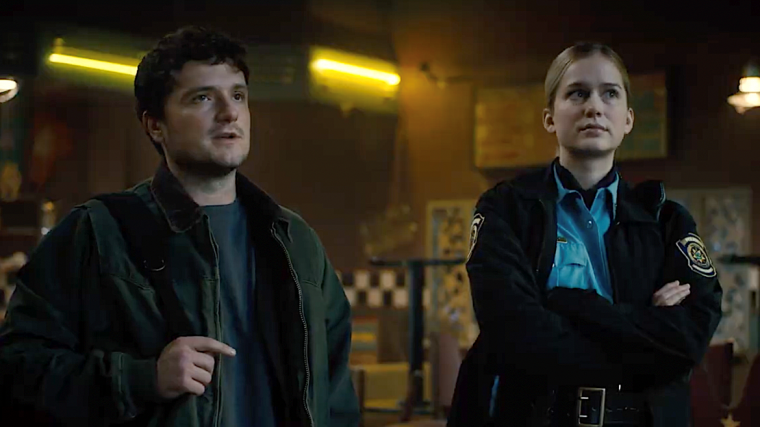
Personally, I've never played any FNaF games, and have never watched my grade-school friend play them, either. But I have, in her company, watched YouTube videos of other people playing, and Tammi and her team appear to deliver a reasonable facsimile of the experience: creepy tingles when animatronics are briefly glimpsed in the background; nervous apprehension when characters enter dark rooms and air vents; quick inhales of surprise, if not vocal “A-a-a-a-a!”s, followed by laughter with every new jump scare. These weren't my reactions, mind you. But I'm a 50-something who has seen, like, a zillion horror flicks. Every reaction that Tammi was likely seeking was achieved in the responses of the nine-year-old to my right, while her parents and I shared happy expressions of “Wow … this is really working for her!” The film is grave enough to be taken seriously yet cheeky enough to not leave kids traumatized, and my fourth-grade chaperone breathlessly recounted plot points, series similarities and diversions, and Easter eggs the whole ride home and, as her dad told me, well into the night and subsequent morning. (She was particularly taken with the cameo by a famed FNaF YouTuber I didn't recognize, and we all adored the repeated cameos by Balloon Boy, who was responsible for one of the funniest mid-credits stingers in ages.)
Were I reviewing without a pre-teen audience in mind, I'd undoubtedly spend more wordage on the movie's failings, because they're excessive and kind of unmissable. Beyond the complete absence of anything that could reasonably raise an adult heart rate, the storyline that finds Mike's little sister Abby (Piper Rubio) initially befriended by, and then at the mercy of, the animatronics is aggressively sentimentalized. While it was lovely to see her, I could have done entirely without the child-custody subplot involving Mary Stuart Masterson as the Schmidt siblings' hostile, brittle aunt. Matthew Lillard, working at peak eccentricity, has a terrific intro as Mike's career counselor before his duties make you want to hide your face in embarrassment. And although Hutcherson is in solid form and Elizabeth Lail makes for a friendly screen partner, the latter's dialogue and purpose are so routinely ludicrous that her local policewoman just might stand as the most incompetent law-enforcement officer in 21st-century cinema. And I've seen Paul Blart: Mall Cop.
I'm sure it goes without saying that none of this bothered my young pal – nor, evidently, any of the numerous other grade- and middle-schoolers at the packed Saturday-evening screening we attended. Indeed, the auditorium seemed to be practically buzzing with delight: at the full-size renderings of Freddy, Bonnie, Chica, and Foxy; at the comic malevolence of Mr. Cupcake, who at one point (in PG-13 fashion) chows down on a victim's face; at the slapstick of the pizzeria's mascots assembling a fort out of highly stacked dining tables. The fourth-grader beside me gasped and giggled and excitedly whisper-chattered through it all, leaving her folks and me grateful that the Five Nights at Freddy's collaborators clearly understood their movie's target demographic and proceeded accordingly. I've seen scores of better horror movies, but can't think of a single one that inspired such relief.
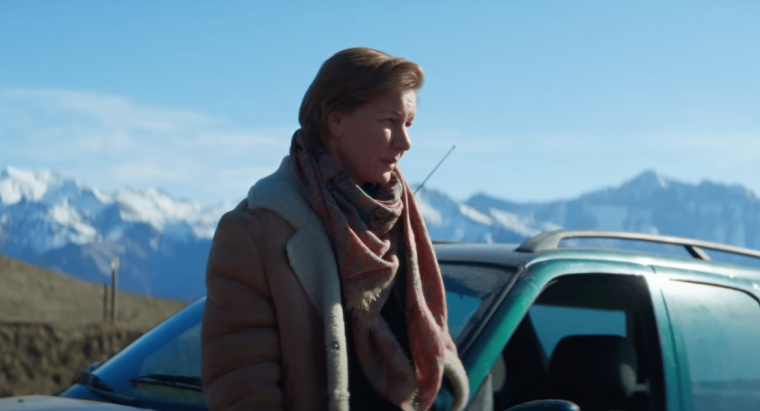
ANATOMY OF A FALL
Directed by Justine Triet and written by the French filmmaker and her creative and romantic partner Arthur Harari, the dramatic thriller Anatomy of a Fall is currently playing at Iowa City's FilmScene at the Chauncey, and days after seeing it, I'm still not sure what to think. I'm not talking about the movie's quality; this year's winner of the Palme d'Or at the Cannes Film Festival, Triet's astounding achievement is easily the most arresting, surreptitiously emotional release I've yet seen in 2023, and I was riveted through the whole of its two-and-a-half hours. Yet while I'm about 80-percent sure I know the answer to the film's central mystery, there's a nagging 20 percent of me that remains decidedly uncertain, with the arguments for my wrongness growing stronger upon each reflection. This should be driving me nuts. Instead, it's making me almost unreasonably happy.
A roughly 10-minute sequence prior to the opening credits effectively establishes Anatomy of a Fall's narrative. In the living room of her remote home in the French Alps, successful author and native German Sandra Voyter (Sandra Hüller) is in the initial, getting-to-know-you stage of an interview conducted by local graduate student Zoé (Camille Rutherford). Their talk is casual and mildly flirtatious, and it's quickly interrupted by a blast of music from upstairs – a steel-drum cover of 50 Cent's “P.I.M.P.” that grows louder and louder as the women chat. (After only one viewing, I firmly believe that this Bacao Rhythm & Steel Band rendition is as firmly entrenched in my subconscious as that instrumental take on “I've Got 5 on It” became after Jordan Peele's Us.) With the noise too deafening for conversation to be picked up by Zoé's recording device, Sandra apologies, explaining that her husband Samuel (Samuel Theis) tends to crank the music when he's working, and she ends the interview. As the young woman drives away, Sandra heads upstairs, while the couple's partially blind 11-year-old Daniel (the heartbreaking Milo Machado Graner) takes their border collie Snoop for a walk. After a while, the boy and his dog return to find the 50 Cent piece still blaring, and Samuel lying on his back, four stories below the attic window, with a fatal head injury. Clearly, there was a fall. But was it an accidental one, a suicidal one, or was the man perhaps pushed to his death?
That's a terrific pre-credits hook, and while Triet's film has been widely billed as a courtroom drama, there's plenty of mystery to contend with before the case, and the eventually accused Sandra, ever get to trial. Upon discovering his father's body, Daniel screams for his mother, who claims to have been napping during her husband's demise. (With the roar of 50 Cent at top volume?) After procuring the services of a lawyer (Swann Arlaud's Vincent Renzie) who also happens to be a longtime friend and possible former lover, Sandra reveals an ugly bruise on her forearm, which she says she received through repeated clumsy knocks against a kitchen counter. Far later than Vincent would have liked, Sandra also “suddenly” remembers her late husband's apparent suicide attempt from months before – an attempt that no one, including Samuel's therapist, has heard anything about. Meanwhile, the evasions and revelations regarding the Voyters' marriage continue to accrue as the trial gets underway. Is our protagonist Sandra potentially a wholly untrustworthy source? She claims to have wept buckets when the tragedy was fresh, but is she actually a murderer? I can't tell you – and not because I don't want to tell you. I literally can't.
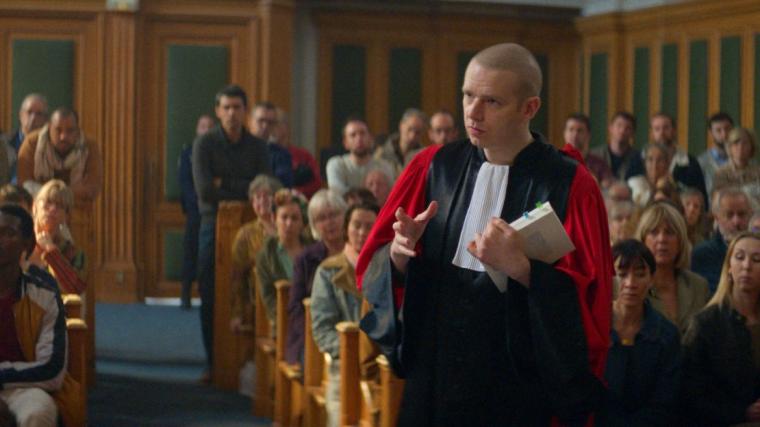
So be prepared: If you see Anatomy of a Fall, and you should make plans to see it as soon as humanly possible, don't expect a neat, tidy, Law & Order-esque resolution. Triet and Harari certainly provide enough motivation and circumstantial evidence for us to draw our own conclusions, and although the screenwriters are willfully cagey, they're not cruel – we aren't denied the trial's ultimate verdict. But Triet is obviously less focused on the question of Sandra's guilt or innocence than she is on the myriad questions surrounding how well we can ever fully grasp events, particularly marital events, that we're not personally privy to. (In interviews, Triet has repeatedly stated she even she doesn't know whether Sandra actually killed her spouse, and despite several pleas for guidance, she didn't offer an answer to Sandra portrayer Hüller, either.) In a tenor-altering sequence late in the film, we actually witness, through flashback, a verbally violent argument between Sandra and Samuel that took place the day before his death, in which initially subdued sparring leads to searing recriminations. The scene grows continually nastier and louder, and just as the fight reaches its apex … Triet ends the visual flashback, and we only register what those listening to a courtroom audiotape do. What we hear doesn't sound at all good. But what, precisely, are we hearing?
I can't fathom that Triet's movie would work half as well as it does without a performance as phenomenally intuitive, inscrutable, and commanding as Hüller's. Her Sandra isn't necessarily likable, but she is eminently relatable, and the performer ensures that you feel for the woman's determination in protecting her child, her confusion at being (in her telling) wrongly accused, and her frustration in having to detail the lead-up to Samuel's death, as per law, in French, when German and English are her preferred languages. (Half of Triet's film is in English – which may have prevented France from submitting its Palme d'Or winner for the International Feature Oscar, a spot instead reserved for the forthcoming The Taste of Things.) Still, we're needled by the notion that Sandra isn't telling everyone, least of all us, everything there is to know about Samuel's demise, and our uncertainly makes even Hüller's most seemingly throwaway scenes electrifying. You keep waiting for Sandra to snap either in anger or sadness, and every so often, she does. We're still, however, kept deliberately outside her head eternally searching for clues, and what results is the rare cinematic character study that, for some of us, is as exciting and spellbinding as Speed.
Triet routinely pulls off feats as haunting and dynamic as her work with Hüller. On occasion, the director's choices border on the self-consciously showy, as when her camera pans back and forth while Daniel is being interrogated in court, or when Samuel, again in flashback, perfectly lip-syncs the testimony being given by his son. (This scene alone is enough to make me question whether my hunch about Sandra's guilt is correct.) Even these arguable inclusions, however, don't in any way undermine the staggering strength of Triet's presentation, given its artful analysis of physical evidence and motivational possibility; its courtroom figures who emerge as distinct, three-dimensional individuals; its fascinating insight into the French legal process in which judges, lawyers, and witnesses seem able and allowed to question one another at will; and its refusal to pacify viewers with easy solutions when lingering questions prove so much more rewarding.
And let's not forget Snoop, the border collie played by a canine named Messi, who deservedly won the Palm Dog prize at Cannes (yes, that's a real thing) and, as a friend astutely observed, even gets listed first in Anatomy of a Fall's end credits. I fully believe all the film's mysteries can be resolved in that pup's extraordinary blue-eyed gaze. Blessedly for the movie's audience, whatever Snoop knows, he ain't tellin'.
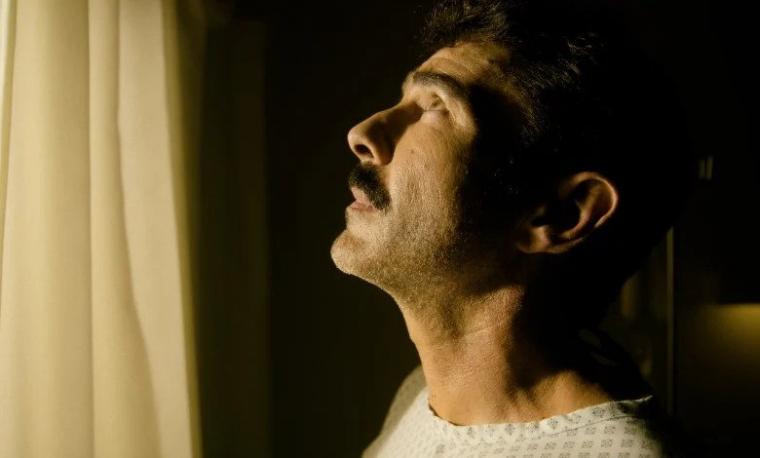
AFTER DEATH
Considering my more-booked-than-usual weekend, I found myself, on Sunday, with time for only one more movie, and was consequently faced with the choice of After Death, a pro-faith documentary on near-death experiences by the independent Angel Studios company that released the unanticipated summertime smash Sound of Freedom, or Freelance, a jungle rom-com-adventure with John Cena and Alison Brie. I adore Alison Brie, and have frequently liked Cena in comedy. But I ultimately opted for After Death because based on the two films' previews, this one didn't look – how to put this … ? – mind-crushingly stupid. I think I made the right choice, even if Freelance's zero-percent “freshness” rating on Rotten Tomatoes hardly had me thinking twice about the decision.
Barring the feature's decidedly nonsecular leanings and a few swooping, God's-eye camera moves that take full advantage of After Death's big-screen presentation, there's really nothing here you wouldn't find in a normal two-hour block on the History or Discovery Channels. Through a series of talking-head recollections, a number of bestselling authors (among them 90 Minutes in Heaven's Don Piper), medical professionals (one of whom, cardiologist Michael Sobom, admits that he initially considered near-death experiences “hogwash”), and random citizens recount their NDEs and religious beliefs that were either confirmed or instilled, and if you're someone who reflexively scoffs at the notion of the big bright light filled with love that engulfs each of the almost-deceased, you'll have to search mightily for other examples of your kind. We're told, for instance, that 23 percent of those who have claimed an afterlife experience witness visions of eternal darkness and Hell – yet the only sufferers that directors Stephen Gray and Chris Radtke give screen time to are those who worked their way through the terrors, reached out to God for salvation, and found themselves rewarded with an all-encompassing sense of peace. Not to be a heathen, but I would have appreciated even a single interview with someone who categorically stated that yep, life on Earth is way preferable to whatever nightmare was awaiting us on the other side.
That said, it was evident that my supremely well-attended Sunday (post-church) screening of After Death was giving patrons just what they likely hoped from it, and while Gray's and Radtke's doc is in no way innovative, it's as easy to sit through as any number of History or Discovery Channel specials you'd agreeably, lazily watch on a rainy weekend afternoon. While the staged re-creations rarely rise above the level of TV's Unsolved Mysteries, the speakers are mostly welcome company, and not all of their tales transpire in expected ways. One professor-turned-minister details how his wife and children stopped talking to him after he recalled his NDE, and a particularly sympathetic survivor breaks our hearts when she reveals that after being revived, she endured a personal tragedy that made her want to die all over again. Not all of the raconteurs are as persuasive as they are engaging, and in many ways, and for most of its 100-minute length, After Death is preaching to the choir. Yet it's a sermon refreshingly delivered by multiple voices, not all of whose, it turns out, lead to the exact same moral.








